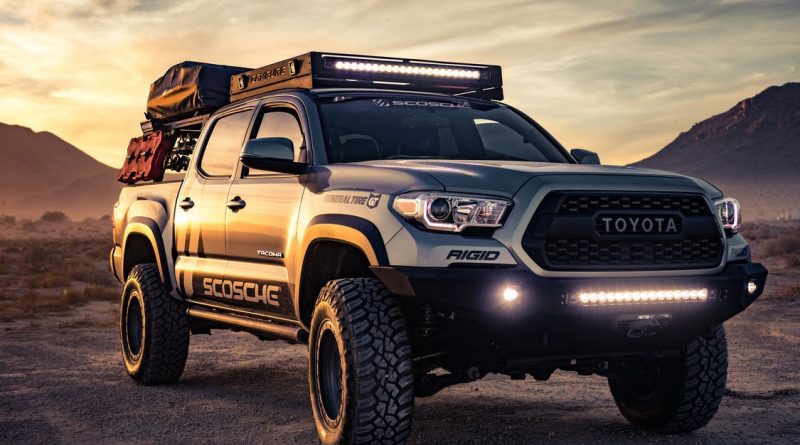Top Vehicle Safety Features And Why Your Vehicle Should Have Them
Thanks to advancements in technology, driving is much safer than it was 20 years ago. Let’s take a look at the top safety features available in today’s market and why you should have them.
Post Content
Top Safety Features
-
Full Surround Airbags
Combined with seatbelts, airbags are credited as having the most significant impact on your safety in the event of an accident. Since 1999, all vehicles come standard equipped with front airbags but folks at the Insurance Institute For Highway Safety say that’s not enough. For optimum safety, consider vehicles with side and curtain airbag options.
Side and curtain airbags offer additional protection to rear passengers, who, in most cases, are children. When it comes to family safety, this is a must-have feature.
2. Electronic Stability Control
Following closely behind seatbelts and airbags, experts believe that electronic stability control (ESC) features are also a critical safety feature. Studies show that ESC led to a 49% increase in survival rates for single vehicle accidents. Examples include hitting an animal or accidents due to poor road conditions. That means vehicle occupants are almost twice as likely to survive what would otherwise be a fatal accident.
This feature gives the vehicle the capability to make corrections on behalf of the driver in a split second. If there’s an indication of impending danger, sensors will activate features such as anti-lock brakes or traction control. It’s so important that, since 2012, all vehicles are manufactured with ESC as a standard safety component.
3. Automatic Crash Notification
In the unfortunate event of an accident in which airbags are deployed, a vehicle with automatic crash notification will unlock your doors, turn on your flashers, and notify emergency response systems. This safety feature uses GPS to inform EMS of your location as well.
Most drivers on the road today have a cell phone and presume they’ll be able to use it to call 911 if there’s an accident. The reality is, if the impact is significant enough to trigger your airbags, there’s a strong likelihood that your phone will be out of your reach or damaged, which is why this feature should be at the top of your list. Most vehicles come equipped with this capability, OnStar in Chevrolet for example, but be sure to activate the service after you purchase your vehicle. The emergency response will activate no matter what, but there are other circumstances that might call for a 911 situation.
4. Artificial Intelligence and Telematics
An up and coming technology feature, most commonly seen in Tesla vehicles, is the use of automation. There are 6 levels of automation and each level has more advanced technology. As studies continue to prove the benefits of automation, we will see an increase in safety features that allow the car to take control in certain situations.
Examples include driver fatigue, impairment, or medical emergencies. AI, or machine learning, thus far has shown promising results related to minimizing accidents linked to these common situations. While it will be a while before we see features that use facial recognition and other smart technology, such as heart rate and breathing monitors linked to smartwatches, manufactured in large quantities, the technology does exist and is on the horizon.
Other Non-critical Safety Features and Considerations
While it may be tempting to spend your money on upgrades like rims or trim packages, safety should be your top priority. Features such as lane assist, backup cameras, hands-free connection, and pre-collision systems offer layered safety and also qualify for discounts on car insurance. Most vehicles manufactured after 2015 come with these features as part of the standard safety package and combined, they qualify vehicles for the highest crash test ratings.
Child safety features have also changed drastically since the 90s. LATCH systems are now required, along with front airbags and ESC. Requirements for child safety seats have also improved and not only is proper restraint recommended, it’s the law. Nearly 35% of fatalities for children under 12 are directly related to improper restraints.
As technology advances, accident related injuries decline. In the event that you find yourself injured despite having a vehicle equipped with adequate safety features, an accident injury attorney, such as https://www.rosenfeldinjurylawyers.com/car-accident.html might be able to assist you in receiving compensation.
Top Safety Picks
Now that you’re aware of the safety features available, you might consider upgrading your vehicle. These vehicles have the highest crash ratings, based on vehicle to vehicle and vehicle to pedestrian evaluations, and the safety features mentioned above are included
Top Minivan
- Toyota Sienna
- Chrysler Pacifica
- Honda Odyssey
Top SUV
- Toyota Highlander
- Ford Explorer
- Nissan Rogue
Top Mid-size Sedan
- Kia Stinger
- Nissan Altima
- Subaru Outback and Legacy
Top Pickup
- Ford 150
- Dodge Ram 1500
- Hyundai Santa Cruz
Technology is rapidly advancing and while we don’t have flying, fully automated vehicles yet, manufacturers have come a long way in making vehicle safety a top priority.




